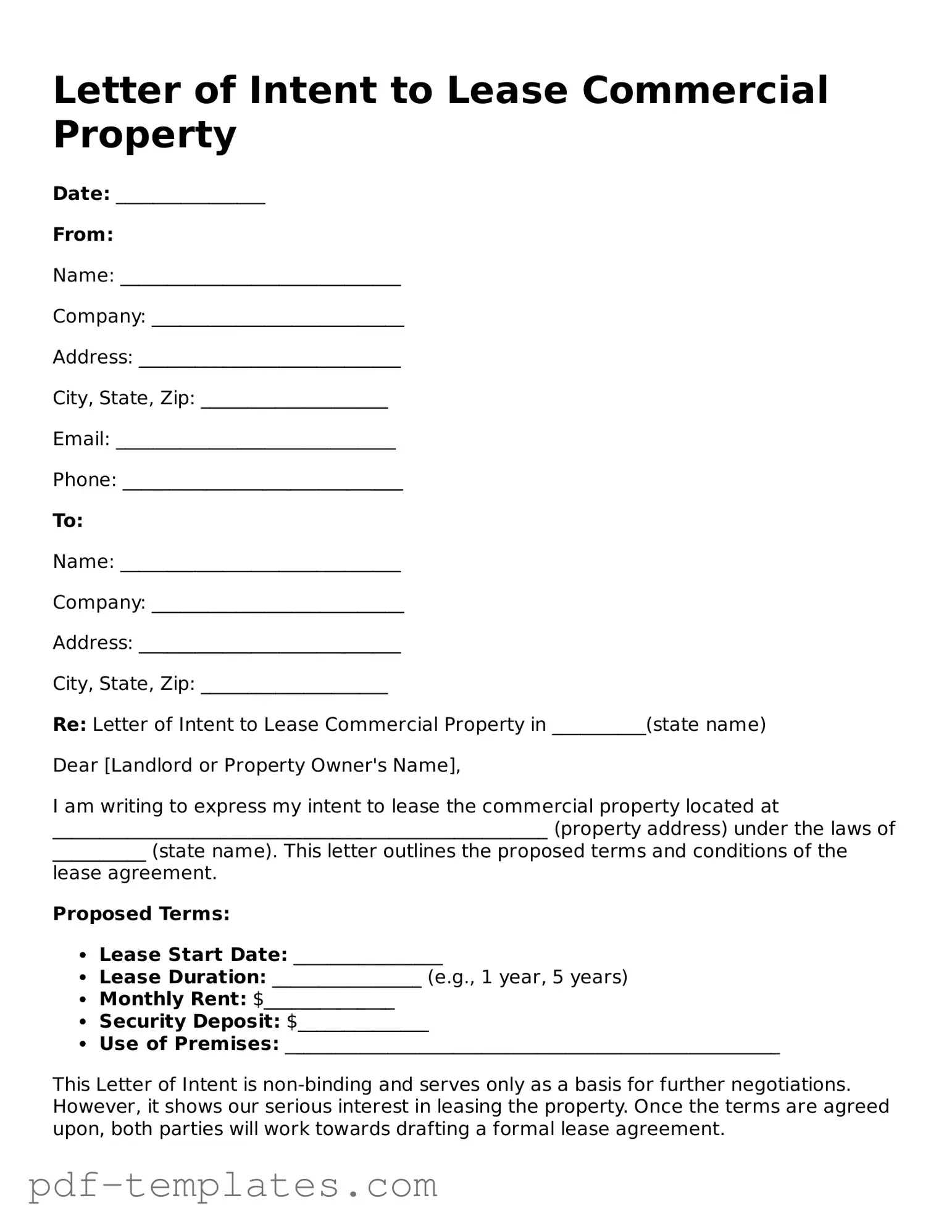The Letter of Intent (LOI) to Lease Commercial Property is a preliminary document that outlines the basic terms of a lease agreement before a formal contract is drafted. It serves as a foundation for negotiations, similar to a Memorandum of Understanding (MOU). An MOU is often used in various business contexts to outline mutual agreements between parties. Like the LOI, an MOU is non-binding and focuses on the key points of the agreement, allowing both parties to clarify their intentions without committing to legal obligations just yet.
Another document that shares similarities with the LOI is the Term Sheet. A Term Sheet is a concise document that lays out the key terms and conditions of a business agreement. In the context of leasing, it highlights important aspects such as rent, duration, and responsibilities of each party. Both the Term Sheet and the LOI facilitate discussions and negotiations, ensuring that everyone is on the same page before drafting a more detailed contract.
When preparing for potential investment opportunities, it is essential to understand the benefits of an Investment Letter of Intent document. This form sets the groundwork for negotiations and helps streamline the process of investment integration.
The Letter of Intent also resembles a Purchase Agreement in real estate transactions. While a Purchase Agreement is a legally binding contract that outlines the terms of a property sale, the LOI serves as a preliminary step in the leasing process. Both documents aim to clarify the expectations of the involved parties, but the Purchase Agreement is more formal and detailed, reflecting a commitment to proceed with the transaction.
Another related document is the Non-Disclosure Agreement (NDA). While an NDA focuses on confidentiality, it can accompany an LOI when sensitive information is shared during negotiations. Both documents help establish trust and protect the interests of the parties involved, allowing them to discuss terms freely without fear of information leakage.
In the realm of real estate, a Lease Proposal is another document akin to the LOI. A Lease Proposal includes specific terms that a landlord offers to a prospective tenant, much like an LOI presents the tenant's intentions to lease a property. Both documents initiate discussions and help both parties understand the basic terms before moving forward with a formal lease agreement.
The LOI is also similar to a Letter of Interest, which is often used in various business sectors to express a party's interest in pursuing a deal. Like the LOI, a Letter of Interest outlines key terms and intentions, serving as a preliminary communication that can lead to further negotiations and a more formal agreement.
Lastly, a Business Plan can be compared to the LOI in the sense that both documents outline intentions and objectives. A Business Plan details the strategic approach to achieving business goals, while the LOI specifies the intent to lease a property. Both documents are essential in guiding discussions and ensuring that all parties understand the vision and direction of the proposed arrangement.
